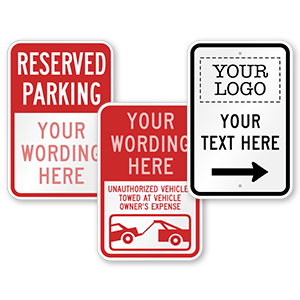How to evacuate a high rise
Evacuating any building, whether it’s during an emergency, drill, or false alarm can be stressful. Evacuating a high rise, however, poses unique challenges that we may not all know how to handle. Whether you’re an employee or employer, being thoroughly prepared will help ensure the evacuation process goes smoothly and safely for everyone. Simply put: Know what to do and don’t freak out.
The National Fire Protection Association defines a high rise as a building greater than 75 feet, from which the building height is measured from the lowest level of fire department vehicle access to the highest floor. High-rise buildings are typically found in urban areas, serving as residential and/or office buildings. If you are an employee in a high-rise building emergency situation, the better you know the building’s evacuation plan, the more you are able to help your co-workers also.

High rises are considered shorter than skyscrapers (via MissTurner).
Evacuating a high-rise building is more complicated than evacuating other buildings because more people are required to travel a greater vertical distance in order to exit.
The following OSHA, or Occupational Safety and Health Administration, -approved tips will equip you to safely evacuate a high rise:
Prior to an evacuation
- Familiarize yourself with the building’s emergency evacuation plan. If your building does not have one, speak to the building owner/manager about creating one. OSHA requires that all employers with 10 or more employees record emergency action plans in writing.
- Keep a copy of your building’s emergency evacuation plan in the office. Preferably somewhere easy to review periodically and spot in a frenzied situation.
- Post emergency contact numbers near telephones.
- Know at least two alternative exits from every room in your workplace.
- Be able to recognize the sound of an evacuation/emergency alarm.
- Make sure nothing blocks doorways, hallways, or stairways and fire exits remain unlocked. Otherwise, this could potentially slow down the evacuation process.
- Agree upon a designated assembly area. This is where employees will gather after the evacuation and a head count will be taken. It should be a safe distance from the building where employees will not interrupt emergency responders.
- If you are a disabled individual who may require assistance during an evacuation, find someone who would be willing to assist you.
- Conduct evacuation drills regularly.

Assembly areas should be located outside the building in an open space where everyone can gather and be easily identified. Joe Loong.
During an evacuation
- Contact appropriate emergency personnel.
- Leave the workplace in a quick yet calm manner, following the building’s evacuation plan. Though evacuations should be taken very seriously, panicking will only make the situation worse.
- Listen for instructions over the building’s public address system.
- In the event of a fire, keep fire doors closed. This will slow the spread of fire and smoke.
- Avoid using elevators during a fire or similar emergency. When an emergency alarm is activated, elevators are usually recalled to the lobby, so they may not even be available.
- If you are trapped in the building, get to a room with an outside window and a telephone. This will allow you to call for help and be seen by emergency responders.
- Report to your company’s designated assembly area. Notify emergency responders if anyone is missing.
- Do not re-enter the building until authorities allow it.
If you live in a high rise, it is especially important to take the initiative to familiarize yourself with its evacuation procedure. In New York City, there is no law that requires residential buildings to have an emergency evacuation plan, though experts recommend building managers consider what they would do. If your building does not have an established evacuation procedure, you should develop one. If you live with roommates or family members, make sure they are also aware of the evacuation plan, and practice it together.















